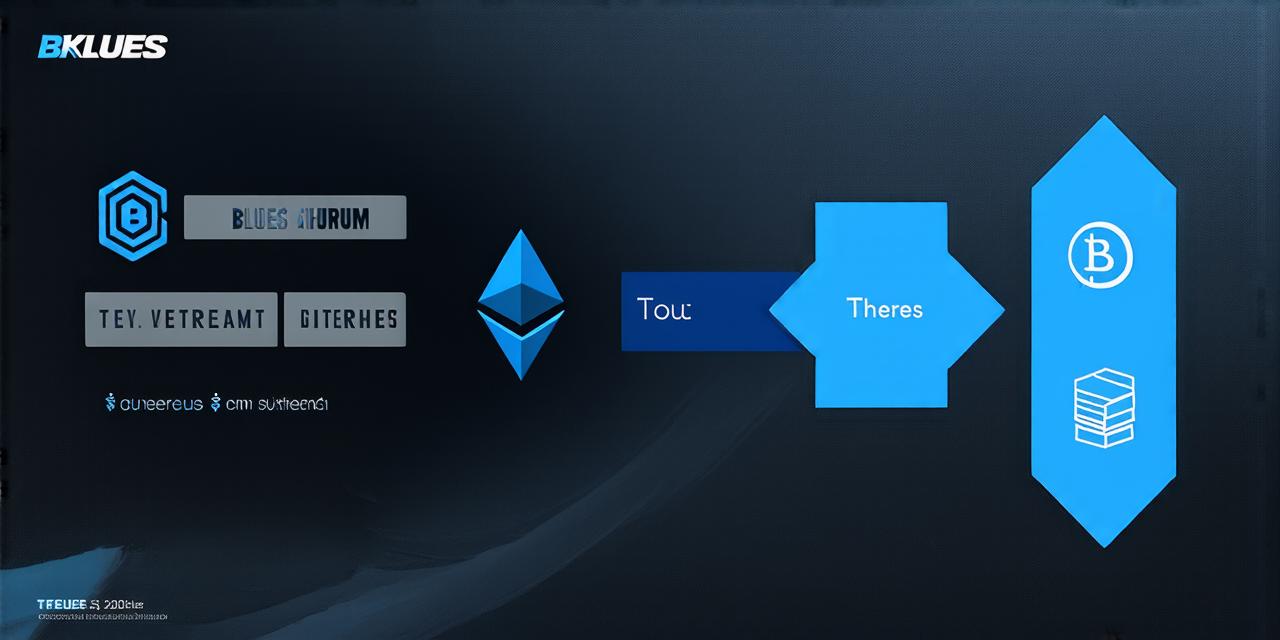Introduction
Blockchain technology has revolutionized various industries, including finance, healthcare, and supply chain management. However, one of the most popular blockchain networks in use today is Ethereum.
It’s a decentralized platform that enables developers to create and deploy smart contracts, non-fungible tokens (NFTs), and decentralized applications (dApps).
Ethereum Architecture
Ethereum is an open-source blockchain platform that enables developers to create decentralized applications and smart contracts. Its architecture is unique compared to other blockchains, as it supports both proof of work (PoW) and proof of stake (PoS). This dual consensus mechanism allows Ethereum to scale and maintain high levels of security while reducing energy consumption.
Ethereum’s architecture consists of several layers:
- Application layer: This is the topmost layer that interacts directly with users and applications. It includes the web3.js library, which provides a user-friendly interface for interacting with Ethereum smart contracts.
- Execution layer: This layer is responsible for executing smart contracts on the Ethereum blockchain. It includes the Virtual Machine (VM) that executes code and manages memory, storage, and computation resources.
- Consensus layer: This layer is responsible for maintaining the integrity of the Ethereum blockchain by ensuring that all nodes agree on the state of the network. It includes the PoW and PoS consensus mechanisms, which allow Ethereum to scale while maintaining high levels of security.
- Storage layer: This layer provides a secure and efficient way of storing data on the Ethereum blockchain. It includes IPFS (InterPlanetary File System), which allows for decentralized storage of large amounts of data.

Ethereum’s History
Ethereum was created in 2013 by Vitalik Buterin, a Russian-Canadian programmer. The idea behind Ethereum was to create a platform that would enable developers to build decentralized applications and smart contracts. In the following years, Ethereum underwent several major upgrades and improvements, including:
- Frontier: This upgrade introduced new features such as state channels and off-chain computation, which allowed for faster and more efficient transactions.
- Byzantine Fault Tolerance (BFT): This upgrade enabled the Ethereum blockchain to tolerate a certain number of malicious nodes without compromising the integrity of the network.
- Casper: This upgrade introduced a new consensus mechanism called proof of stake, which allowed Ethereum to scale and maintain high levels of security while reducing energy consumption.
Use Cases for Ethereum
Ethereum’s versatility makes it suitable for a wide range of use cases. Here are some of the most popular ones:
- Decentralized Finance (DeFi): Ethereum is home to several DeFi projects such as Uniswap, Compound, and MakerDAO. These projects enable users to lend and borrow assets in a decentralized manner, without the need for intermediaries.
- Non-Fungible Tokens (NFTs): Ethereum is the most popular platform for creating and trading NFTs. NFTs are unique digital assets that can represent anything from art to collectibles to real estate.
- Decentralized Applications (dApps): Ethereum enables developers to create dApps, which are applications that run on a decentralized network. Examples of dApps built on Ethereum include OpenSea, MetaMask, and DappRadar.
- Supply Chain Management: Ethereum’s transparency and immutability make it suitable for supply chain management. Companies can use Ethereum to create a decentralized ledger that tracks the movement of goods from production to delivery.
Advantages and
Disadvantages
of Ethereum
Advantages
Ethereum, like any other technology, has its advantages and disadvantages. Here are some of the most important ones:
- Scalability: Ethereum’s dual consensus mechanism allows it to scale while maintaining high levels of security. It can handle a large number of transactions per second without compromising performance.
- Versatility: Ethereum is suitable for a wide range of use cases, including DeFi, NFTs, dApps, and supply chain management. Its flexibility makes it a popular choice for developers.
- Decentralization: Ethereum is a decentralized platform that enables users to interact directly with the network without the need for intermediaries. This increases security and eliminates the risk of censorship.
- Community Support: Ethereum has a large and active community of developers, users, and investors who contribute to its development and support. This community provides resources, tools, and expertise that can help you build innovative applications.
Disadvantages
1. Energy Consumption: Ethereum’s PoW consensus mechanism consumes a significant amount of energy, which has raised concerns about its environmental impact. The network’s energy consumption is estimated to be equivalent to the energy used by 3 million people.
2. Gas Fees: Transactions on the Ethereum network require gas fees, which are charged per unit of computation. These fees can vary widely depending on network congestion and transaction complexity.
3. Complexity: Ethereum’s architecture is complex, and it requires a certain level of technical expertise to build applications on it. This can be a barrier for entry for some developers.
4. Competition: Ethereum faces competition from other blockchain platforms such as Binance Smart Chain, Polygon, and Solana, which offer faster transaction speeds and lower gas fees.
Summary
Ethereum is a powerful and versatile blockchain platform that has revolutionized the way we build decentralized applications and smart contracts. Its dual consensus mechanism allows it to scale while maintaining high levels of security, and its active community of developers provides resources, tools, and expertise that can help you build innovative applications. However, Ethereum’s energy consumption, gas fees, complexity, and competition are important factors that should be considered when deciding whether to use it for your blockchain project.
FAQs
1. What is the difference between PoW and PoS?
PoW and PoS are consensus mechanisms used by blockchain networks. PoW relies on miners competing to solve complex mathematical problems, while PoS relies on validators being selected at random to create new blocks based on their stake in the network.
2. How does Ethereum handle gas fees?
Gas fees are charged per unit of computation and are used to pay for transactions on the Ethereum network. They can vary widely depending on network congestion and transaction complexity.
3. What is a decentralized application (dApp)?
A dApp is an application that runs on
